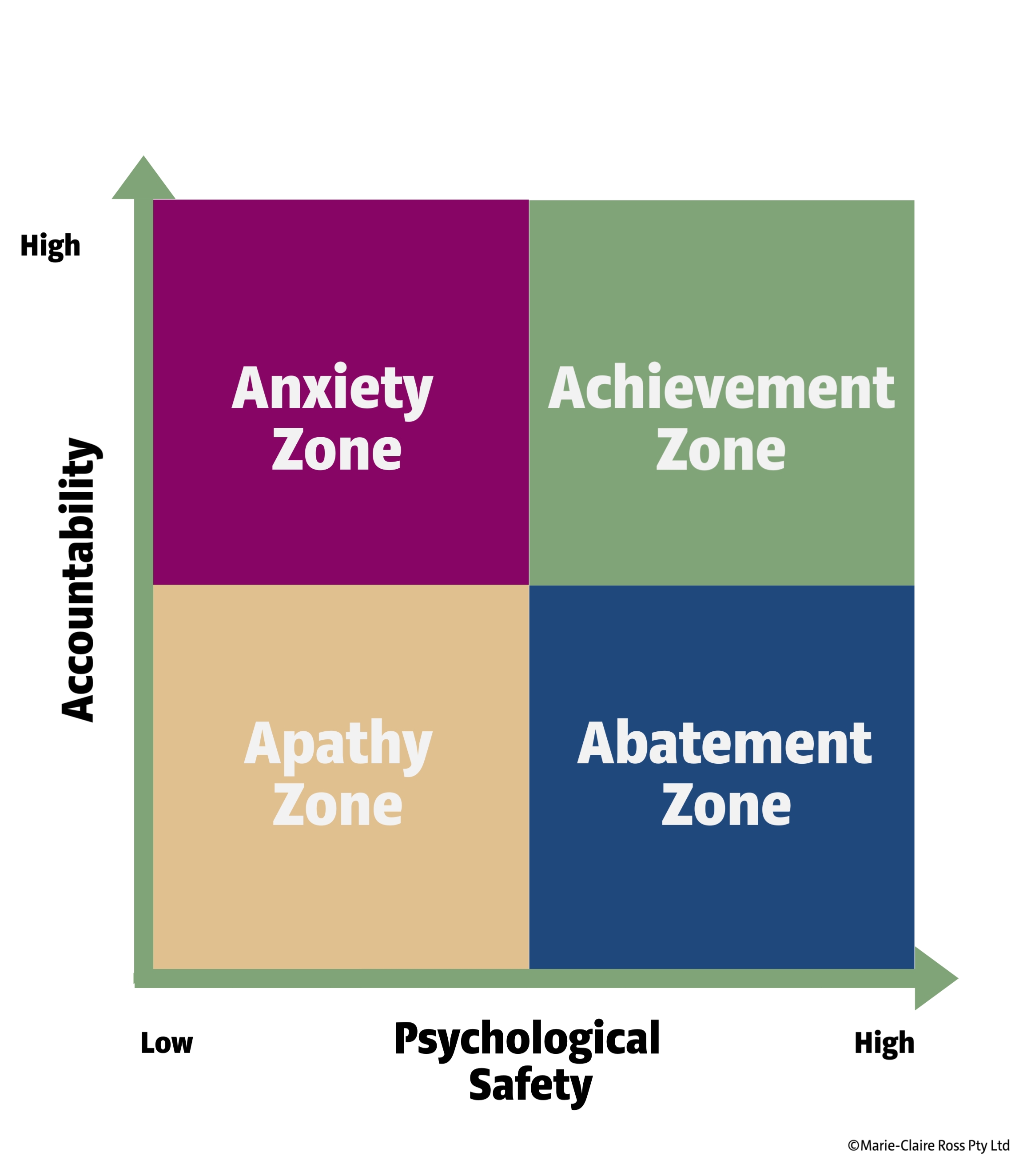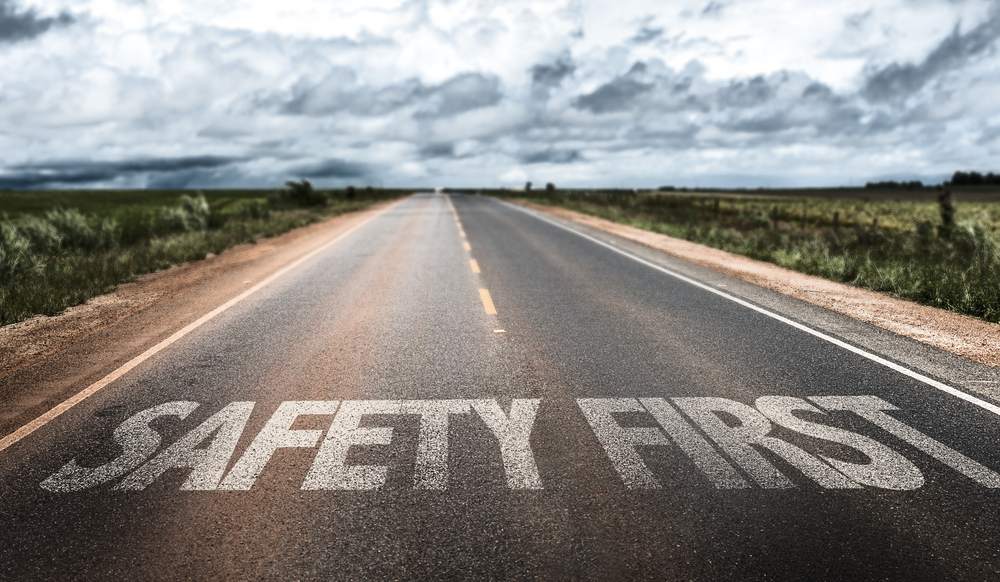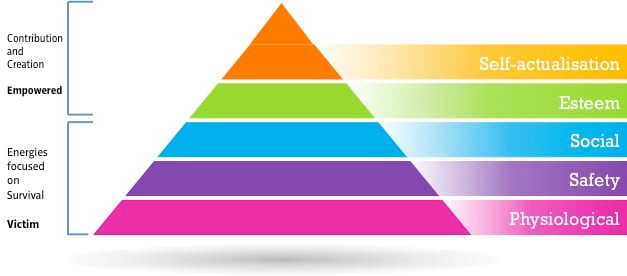In the book, TRUSTED TO THRIVE, it talks about how we are biologically programmed to want to be with people and work together, as we instinctively know it helps our survival. Yet, there is a dark underside to this need to be with others - we also fear rejection. In fact, neuroscience studies have uncovered that we experience social rejection like physical pain.
In other words, we are constantly evaluating our level of interpersonal risk in our teams and workplaces. Interpersonal risk is the fear that people won’t think highly of us or at an extreme level will reject us altogether. This subconscious fear drives us to weigh up whether or not to make a comment or stay silent.
When we first start working with a company or a new team, we quickly assess whether the team leader and our teammates can be trusted. We carefully preserve an image that we are competent. We avoid asking silly questions, speaking up about our concerns, sharing information and reporting errors. In other words, the critical elements for team discussions that we need to have to improve performance and avert disaster. As it happens, these are also the very factors we need to feel fulfilled in our jobs to perform optimally.
This is where the importance of leaders kicks in. I believe that one of the most important capabilities for a team leader is to create a thriving, safe team environment that decreases interpersonal risk.
As Amy Edmondson explains in her book, The Fearless Organisation, the free exchange of ideas, concerns or questions is routinely hindered by interpersonal fear more often than most managers realise.
You will read a lot about the importance of psychological safety, but what we often don't realise is that when people don't feel safe, some can act, well unsafe.
When my youngest daughter was nine years old, she developed a massive fear of spiders. She had trouble sleeping at night. Instead, of lying in bed trembling with fear, her response was to wake myself up and my husband. Multiple times a night. Not with a gentle "Hey mum, sorry to wake you, But I'm scared and I want a cuddle." No, not her. Her threatened response was to poke or punch me to let me know it was my fault there were spiders in the house (real and not real). If I woke up startled and a bit grumpy, then she went into full on combat mode. Yelling and stomping, so that her sister knew that there was an issue as well. And the neighbours.
Let's just say I didn't respond to these tactics very well. They were not my finest hours. I resorted to getting angry back. And after two weeks of this (when quite honestly I was so exhausted and deflated, I really did question why I thought having kids was a good idea), I realised that she was coming from fear. That she was teaching me that some people when they don't feel safe act deplorably. I realised I had to love her instead. Gave her compassion. And the best way was just to kindly ask my husband to sleep in another room, so that I could hold her until her fears loosened their grip. The worst thing I could do was getting angry back (but it felt like the easiest thing to do at the time).
As a leader, you want to see the signs when people don't feel safe. The most common ones are not speaking up, asking questions or sharing information. But the ones that drive us crazy are when people act defensively, create chaos, blame others or say terrible things. In other words, when people make others unsafe.
And so while we can do all the things to make people feel safe - listening, maintaining responsive eye contact, fostering learning and increasing support - there are some people who will act out. We can tell them off. Let them know their behaviours are inappropriate. But at it's core, it's about empathy. Stepping into their shoes and doing what's best for them. And it's particularly hard, when their venom is aimed at you.
Interestingly, a lot of leaders put up with low trust behaviours believing that is how people are - that their personalities are fixed. But the truth is, as a trusted leader, your leadership abilities encourages people to engage in productive dialogue rather than avoid it. To strive for high performance, rather than wallow in a comfort zone.
Sometimes that means having a conversation that goes deep into the issue without assigning blame. But to shed light on blind spots and offer support that can be in the form of external coaching or seeing a therapist. It also means flagging when their behaviours are toxic and creating issues with team members. But helping people see where they are feeling unsafe, and making it unsafe for others, is an important part of increasing psychological safety. And it has to come from compassion.
This isn't to say that we have to put up with toxic behaviours. But it does mean seeing the signs, being the bigger person, and helping them understand that their fear is driving people away. It means calling it out and shining a light on dark behaviours. Most of the time, people aren't aware of it.
And it also means tapping into our own reactions. Reflecting on when we act unsafely because we are scared of other people's reactions to us. After all, we will create issues in our teams when we inadvertently increase interpersonal risk through our own lack of self-awareness.
Working on creating psychological safety means understanding that interpersonal fears are going to get in the way. Fears that are subconscious. And the only way we can unearth them is having compassionate, honest dialogue about what is going on. Whether that's with ourselves or our people.










